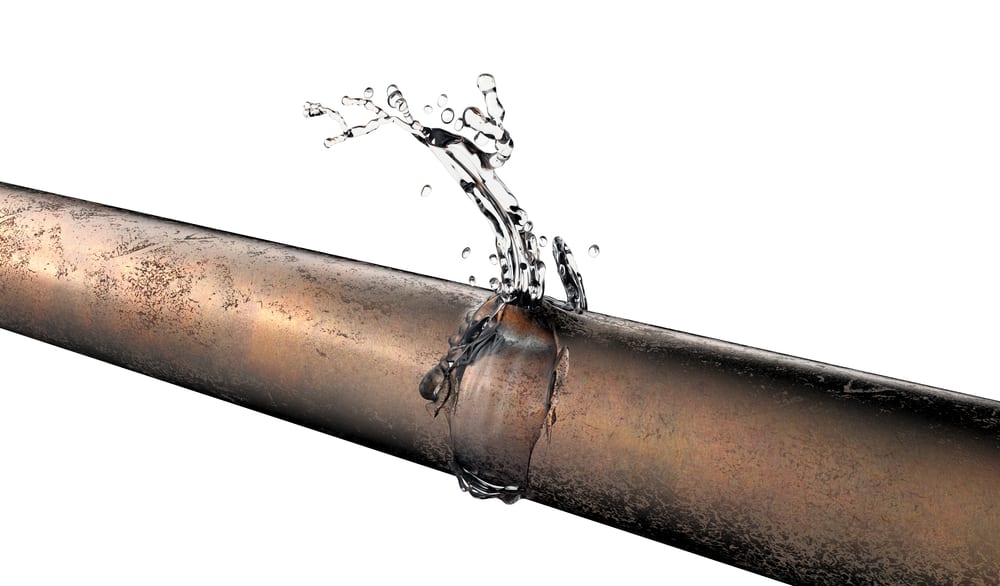Finding Hidden Water Line Leaks: Six Effective Detection Methods
Finding Hidden Water Line Leaks: Six Effective Detection Methods
Blog Article
Presented here below you can get a good deal of worthwhile answers around Hacks to detect leaks.

Early detection of leaking water lines can alleviate a prospective catastrophe. Some little water leakages may not be visible.
1. Examine the Water Meter
Every home has a water meter. Checking it is a surefire manner in which helps you uncover leakages. For starters, shut off all the water resources. Ensure nobody will flush, make use of the faucet, shower, run the washing equipment or dishwasher. From there, most likely to the meter and watch if it will alter. Since no person is using it, there must be no motions. That indicates a fast-moving leakage if it relocates. If you detect no changes, wait an hour or 2 and inspect back again. This indicates you might have a sluggish leakage that could also be underground.
2. Examine Water Usage
If you spot abrupt modifications, despite your intake being the exact same, it means that you have leakages in your plumbing system. A sudden spike in your costs suggests a fast-moving leak.
At the same time, a stable increase on a monthly basis, despite the very same habits, reveals you have a slow-moving leak that's likewise gradually escalating. Call a plumber to completely inspect your building, specifically if you feel a cozy location on your floor with piping below.
3. Do a Food Coloring Examination
30% comes from toilets when it comes to water usage. Test to see if they are running effectively. Decline flecks of food shade in the container as well as wait 10 mins. There's a leak in between the tank and dish if the color in some way infiltrates your dish during that time without flushing.
4. Asses Exterior Lines
Don't forget to inspect your outside water lines also. Examination faucets by attaching a garden hose. Must water seep out of the connection, you have a loose rubber gasket. Change this and also guarantee all connections are tight. If you have actually obtained a sprinkler system, it will help get it expertly checked out and also kept each year. One tiny leakage can throw away tons of water and increase your water expense.
5. Check as well as Evaluate the Circumstance
Property owners ought to make it a routine to examine under the sink counters as well as even inside cabinets for any bad odor or mold growth. These 2 warnings suggest a leak so prompt interest is called for. Doing regular evaluations, even bi-annually, can save you from a major issue.
Check for discolorations and compromising as the majority of appliances and also pipes have a life span. If you believe dripping water lines in your plumbing system, don't wait for it to intensify.
Early discovery of leaking water lines can reduce a potential disaster. Some little water leaks might not be visible. Checking it is a proven way that aids you uncover leaks. One little leakage can throw away lots of water and also increase your water costs.
If you think leaking water lines in your plumbing system, don't wait for it to rise.
How to Know If Your Home Has a Hidden Leak
Water Meter Reveals Inexplicable Water Usage
If you’d like to test whether or not there’s a leak somewhere in your home, you can do this using your water meter. Here is how to conduct the test:
Don’t use any water in your home for at least 30 minutes; this also means not turning on faucets or water-using appliances.
Go outside, and check your water meter for activity.
If your water meter shows that there was activity, even though no one was using any water, this proves that there is a leak in your home.Visible Mold or Mildew Growth
Leaks behind walls create moist, dark environments that allow mold and mildew to grow and thrive. Eventually, you might see mold growth forming on the wall closest to a hidden leak.
If mold is growing in an area that receives a high amount of moisture, such as a bathroom, it may simply be an indication that better ventilation is needed. However, if you see mold growth on a wall or the ceiling in an area where you would not expect, you probably have a hidden leak.
Musty, Mildew Odor
Sometimes you might not be able to see the mold or mildew that is growing as a result of a leak. However, the smell can give the problem away just as easily. If you catch a whiff of something musty, there’s a good chance that old water is collecting somewhere in your home that you can’t see.
Stained/Warped Walls, Ceilings, or Floors
When your home soaks up water, a variety of red flags can become visible, including ceiling stains, bubbling drywall, warped walls, and sagging floors. While these issues can be caused by excess humidity, they can also be signs that a pipe or plumbing connection has started leaking behind your walls.
Inexplicably High Water Bill
After a while, you get a general sense for what your water bill should be. If you own a pool or sprinkler system, your bill will tend to be higher during summer. However, if you receive a water bill that seems especially high, and you can’t figure out what caused it, then you may have a hidden leak somewhere that’s increasing your bill.
https://www.plumbingjoint.com/blog/2019/july/how-to-know-if-your-home-has-a-hidden-leak/

Hopefully you enjoyed our post on Locating water leaks. Thanks so much for taking a few minutes to browse our posting. Sharing is caring. Helping people is fun. I recognize the value of reading our article about Finding hidden leaks.
Book An Appointment Report this page